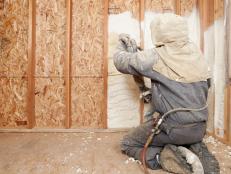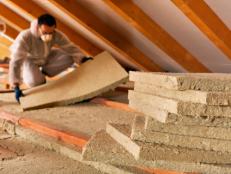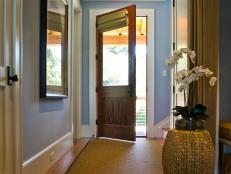A Window of Opportunity for Saving Energy Costs
It's a delicate balancing act. When do new replacement windows justify their cost by lowering heating and cooling costs?
The answer, unfortunately for contractors, is almost never. High-performance windows are pricey, so unless homeowners want to replace the windows in the home for another reason, such as changing the look of the house, eliminating drafts or installing a window to replace one that no longer opens and closes easily, it's usually more cost-efficient to live with the old ones.
However, in the case of new construction, an addition or a decision to replace the existing windows despite the expense, the smart move is to install energy-efficient windows.
According to the Efficient Windows Collaborative, using such windows can significantly cut the cost of heating or cooling a home. What's more, the more efficient the windows, the smaller the heating and cooling unit necessary to handle peak heating and cooling loads — another savings with new construction that helps offset the cost of the upgraded windows.
Adding Up the Savings
So the question now becomes just what kind of windows provide the greatest benefit in terms of lower heating and cooling demand.
To help builders and remodelers determine just what kinds of cost savings their clients can expect by installing various types of windows and to aid in the selection of windows, the Collaborative (an arm of the Alliance to Save Energy) conducted a study in cooperation with Lawrence Berkeley National Laboratory and the Center for Sustainable Building Research of the University of Minnesota. The results not only document the savings possible with a wide variety of window types, but even offer a guide to selecting windows for installation in homes in dozens of locales throughout the country.
The upshot: Savings in heating and cooling costs and in the sizing of HVAC equipment are significant. For example, simple windows with a single pane of clear glass in an aluminum frame installed in a typical 2,000 square foot house with 300 square feet of window area in Phoenix would require an air conditioner capable of producing peak loads of nearly 600 kilowatts. This would require a nearly five-ton unit.
But by installing a wood- or vinyl-framed window with low-solar-gain glazing instead, the peak summer cooling load would be reduced to just over 400 kilowatts. The air conditioning unit required would thus be approximately 3 1/2 tons, a 30 percent reduction in the size of the air-conditioning system required. This simple change could save the home owner 32 percent in cooling costs.
Likewise, in cold climates, the choice of various types of windows can dramatically affect heating costs. Again, with a typical 2,000-sq.-ft. house in Boston as a basis for comparison, a window with clear single glazing in an aluminum frame would require approximately $900 to keep warm in a typical heating system. But a double clear-glass window in a wood or vinyl frame would reduce heating costs by 24 percent. A triple-pane moderate solar gain window with low-E glazing in an insulated frame provides even more dramatic savings — as much as 36 percent.
In addition to providing cost benefits, the choice of windows also affects the comfort level in the home, the Efficient Windows Collaborative found. For example, high-performance windows provide a warmer interior surface during the cold winter months and significantly reduce condensation on the interior surfaces of the windows. And yes, they reduce the likelihood of drafts sneaking into the home.
Visit the Efficient Windows Collaborative for a more in-depth look at the findings and to access the window-selection tool.









































